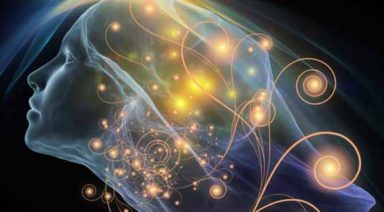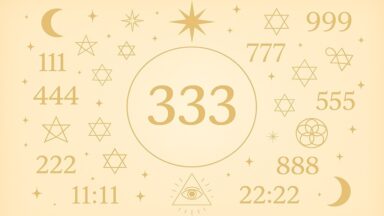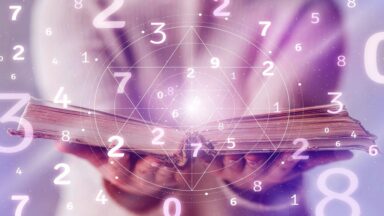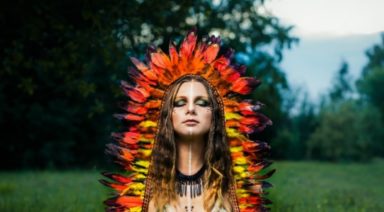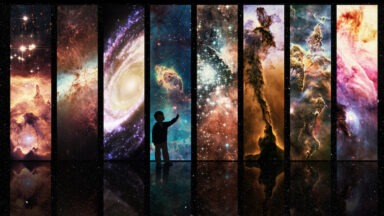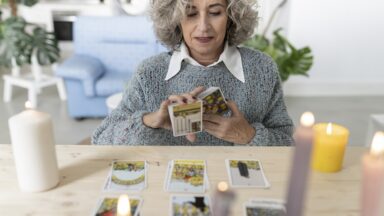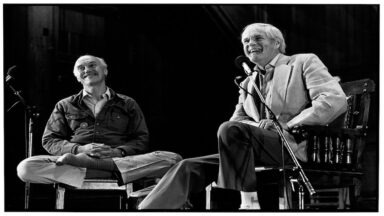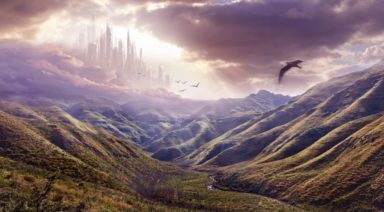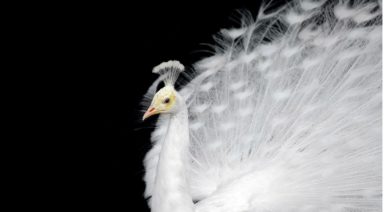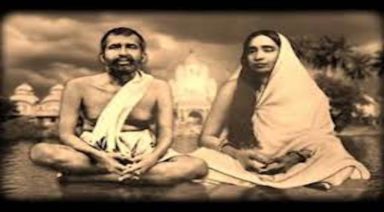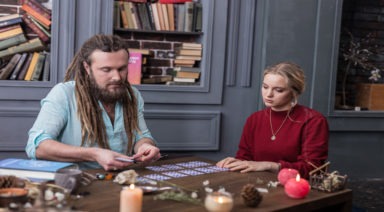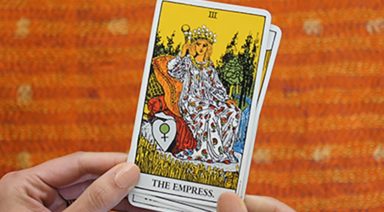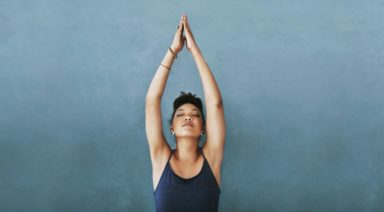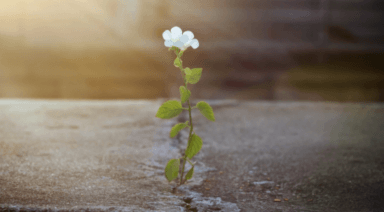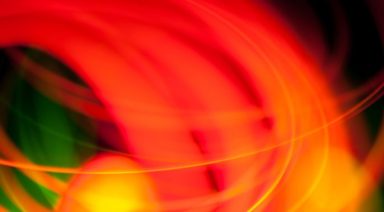What is Voodoo? A Tradition of Magic and Interconnected Realms
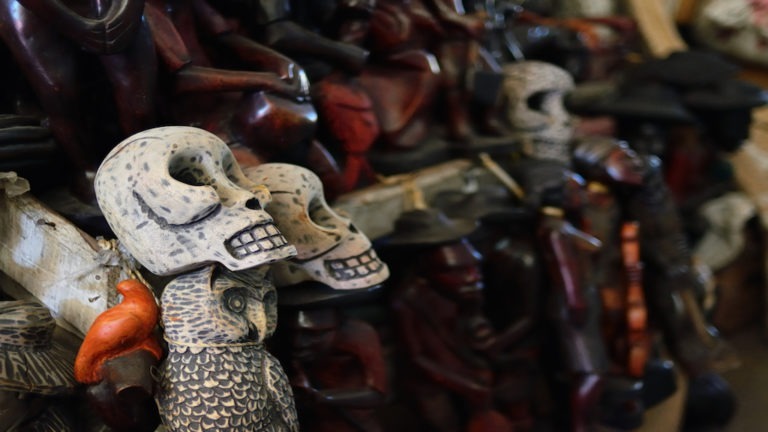
When the word “voodoo” arises, it’s usually accompanied with misconceptions, fear, and a lack of understanding. Often thought of as a violent cult, the truth couldn’t be farther from the popular cultural associations, such as voodoo dolls, witchdoctors, and violent-tinged sorcery. Voodoo, more appropriately known as vodou, is an ancient and diversely practiced religious tradition tied to Africa, the Caribbean, and the Catholic church.
But what exactly is Vodou?
Voodoo: A Rich Tradition Born From Trauma
The word Voodoo/Vodou/Vodun translates to mean “the spirit of God.” Vodou is a monotheistic religion; followers, or vodouisants, believe in one divine figurehead called Bondye, or “the good god.” Additionally, Vodou has a lesser god hierarchy, Iwa, as well as Ioa who are more engaged with the day-to-day life than Bondye, who is considered to be more remote. The Ioa/Iwa are split into three families: Rada, Petro, and Ghede. Humans and Lwa have a reciprocal relationship in which believers provide sustenance and objects in exchange for the Lwa’s protection.
Vodou combines traditions from Africa, the Caribbean, Native Americans, and Catholicism. There is evidence that as far back as 1492, many in the Taino culture were executed for their practice of Vodou during Christopher Columbus’ conquering of Hispaniola. But as the slave trade grew, so did Vodou; the newly arrived African slaves and the surviving Taino found much in common in their shared rituals and approaches to healing.
Vodou does not have a central scripture, it is community-centric and supports individualism. New Orleans is North America’s vodou epicenter, where it arrived through the slave trade from West Africa during the 18th century. Catholicism was the primary religion in the city, and what is now known as “New Orleans Vodou,” is in actuality a hybrid between the two traditions. New Orleans Vodou has become so ingrained in the city’s culture that one need only search online to see the multitude of shops, tourist attractions, and other popular destinations that keep the tradition alive.
What is a Voodoo Doll? Actually It’s a Healing Tool
The mere mention of a Vodou/Voodoo doll brings painful and revenge-filled pins and needles stuck in a cloth doll to mind for most people. But what is behind this practice?
The truth behind the practice of making Vodoo dolls couldn’t be further from this myth. Unlike the dolls that are sold to tourists, authentic Vodoo dolls are created for healing purposes, as well as to help communicate with those who have passed, and are used in rituals to invoke the lwa or loa for spiritual guidance.
Vodoo dolls are human effigies, figurines which represent an idealized persona or deity. Dating back to the Assyrian culture of the first millennium BCE, there is little evidence that any Vodoo dolls are intended to cause harm or seek revenge. However, the mythology behind Vodou dolls being used for evil purposes might be traced to the 1950s, when Haitian “cashew” dolls were imported into the United States. The eyes of the dolls were made from a form of castor beans and caused a swallowing danger for young children, leading to the dolls being banned as “lethal.”
Vodoo dolls have specific colors and corresponding energies associated with each pin:
- Red: Power
- Black: Warding off negative energy
- White: Positivity
- Blue: Love
- Green: Money and prosperity
- Yellow: Success
- Purple: Spirituality
The authentic practice surrounding the dolls is connected to our relationship with the “otherworld" — a central tenet to Voodoo, regardless of the country of influence or origin.
Santeria vs. Voodoo vs. Hoodoo: Spiritual Cousins or Distant Relatives?
While Hoodoo may incorporate aspects of the Voodoo religion, it is in itself not a religion; Hoodoo is a trans-cultural folk practice centered on earth and botanical ritual objects, many of which originated in Africa, but with connections and roots throughout North America. For example, there is a rich tradition of Appalachian mountain hoodoo practitioners that is unique and connected to more ancient hoodoo traditions.
Santeria, like Vodou, is a religion based on one God who is also served by lesser deities, as well as communicating with the otherworld. The word santeria can be translated into meaning “the way of the saints” and is also heavily influenced by Catholicism, much like Vodou. Though one major difference between the two is that santeria is based in Spanish-speaking cultures, with deepest connections in Cuba and Mexico.
A History of Voodoo’s Oppression: Visible and Invisible Worlds
Similar to many other transplanted religious traditions, Vodou has often had to adjust and adapt to the dominant culture. In North America, as African slaves were forbidden to practice their native traditions and religions, the only way they could get around this oppression was to associate their Vodou deities and adapt their rituals to be reflective of the images, iconography, and saints of the Catholic Church. This is not unlike the experience of the Native American culture and Christianity.
Like many traditions, the relationship between the visible and invisible are interconnected, with death being another part of our spiritual journey. Is this some sort of Vodou dark or black “magic?”
Similar to many non Judeo-Christian tradition, the term “magic” is often used to describe a ritual or observance that is unknown or outside dominant religious practices. This misunderstanding, or lack of knowledge, can translate into an air of mystery, as well as feed into fears and misconceptions. In fact, Vodou “magic” is made up of many intricate and ancient rituals that are connected to the earth, the elements, as well as to the realms beyond our physical world — and many of which are part of a very rich mystical human fabric.
Want to learn more about the history of mystical practices? Check out the documentary American Mystic:
Who is Sophia in Gnosticism? Goddess of the Divine Feminine
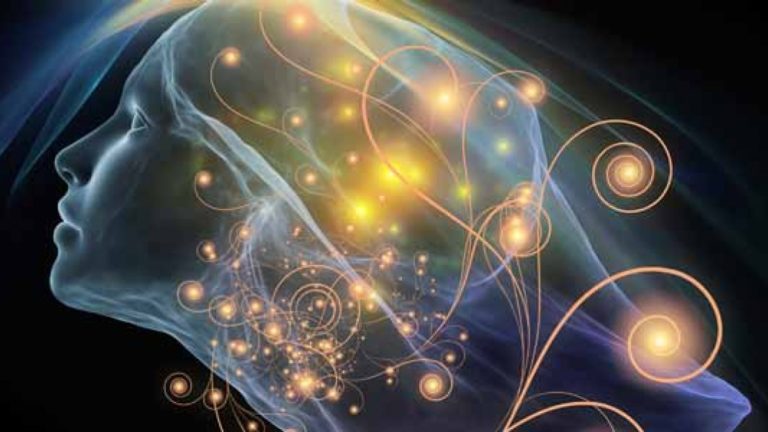
Sophia, the embodiment of divine wisdom in Gnostic tradition, graces us with a profound understanding of the feminine aspect of the cosmos. Gnosticism—interwoven with early Christianity and enriched by Hellenistic philosophy—is more than a religion; it is a journey toward self-realization and communion with a deeper reality. This sacred knowledge, known as Gnosis (from the Greek “to know”), was lovingly passed down through myths found in Gnostic texts such as those discovered in the Nag Hammadi library.
The Myth of Sophia: The Divine Feminine
Let us immerse ourselves in the enchanting myth of Sophia, whose story illuminates the depths of divine wisdom and the sacred feminine.
Sophia’s Origin in the Pleroma
In Gnostic cosmology, Sophia is the radiant feminine personification of divine wisdom and the youngest of the Aeons—emanations of the ultimate reality known as the Monad or Pleroma. Dwelling in the spiritual fullness of the Pleroma, Sophia is intimately connected with the unknowable Father’s brilliance, born of the twin powers of Depth and Silence.
The Descent and Creation of the Material World
Compelled by an intense yearning to know the Father’s essence, Sophia emanates without her consort, creating a disturbance that leads to her descent from the Pleroma. In her fall, she becomes entwined in the material world, inadvertently giving birth to the Demiurge, often called Yaldabaoth. This ignorant and arrogant entity fashions the material universe, unaware of the spiritual realms above. In certain Gnostic scriptures like the Apocryphon of John, the Demiurge is equated with the God of the Old Testament.
Sophia’s descent introduces imperfection, suffering, and ignorance into existence, as the material world is shaped through her unintended actions.



